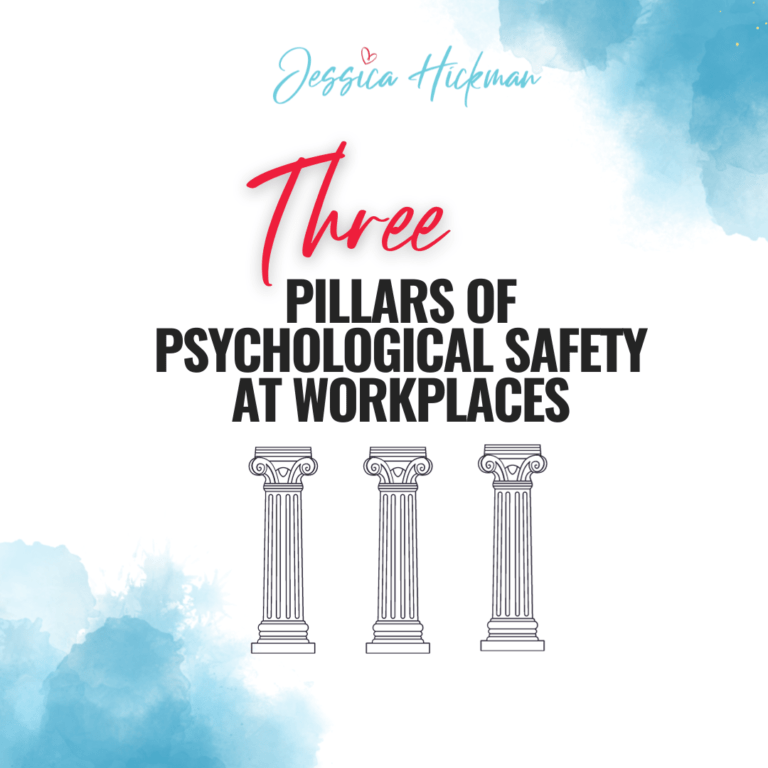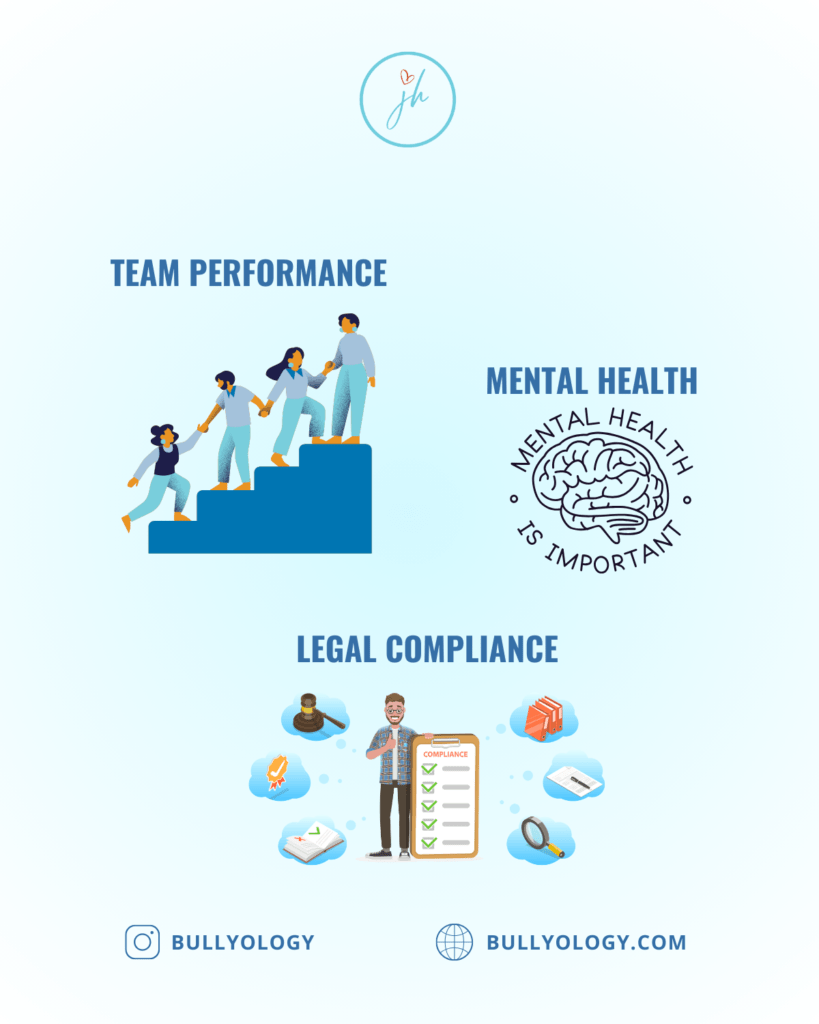Blog
The Three Pillars of Psychological Safety

Picture this: the company has had a bad quarter, and you are tasked with delivering the news to a senior employee. Do you hesitate? Do you spend a good half hour trying to figure out how best to break the news? Do you try to sugarcoat it with assurances that things will be better in the coming year and that the company is sure to get back on its feet? Do you feel dread at the thought of having to break the bad news?
In another scenario, imagine you are having lunch with your co-workers when one of them makes a crude joke about you. You are uncomfortable, and you want to speak up, you want to say “That’s not an appropriate thing to say, and you need to apologise.” You want to be that person who isn’t afraid to speak up for yourself, but… you hesitate. “What if they think I’m too uptight?” “What if they think I’m making a big deal out of nothing?” And so you keep quiet.
In a third scenario, imagine you’re in a work meeting, and a colleague is presenting solutions to a few roadblocks the business has been facing. You notice a few glaring holes in the plan your colleague is proposing, and you want to point them out, you want to voice your concerns, you want to disagree, but… you hesitate.
In today’s blog post, we take a delve into the details surrounding psychological safety— what it is, why it’s important to have, and what are the pillars that uphold it. In today’s blog post, we learn what it takes to not hesitate.
What is Psychological Safety?
In today’s fast-paced and demanding work environments, the concept of psychological safety has gained significant attention— and for good reason.
According to findings from Respect@Work, the Australian Human Rights Commission’s (AHRC) national inquiry into workplace sexual harassment, one in three workers experienced sexual harassment at work in the past five years. The majority of workers chose not to report it, as some believed it would be seen as an overreaction, while others felt it was easier to keep quiet.
Psychological safety is about being secure enough to speak up against things that need speaking up against. Psychological safety means feeling safe to take interpersonal risks, to speak up, to disagree openly, to surface concerns without fear of negative repercussions or pressure to sugarcoat bad news. Psychological safety is the belief that you won’t be punished or humiliated for speaking up with ideas, questions, concerns, or mistakes.
Psychological safety in the workplace is about every single employee feeling safe and secure and valued enough to be able to brainstorm out loud, to voice half-finished thoughts, to openly challenge the status quo, and to work through disagreements together. In the workplace, psychological safety is about knowing that your co-workers have got your back, that they won’t humiliate you for sharing ideas, for taking risks, or for soliciting feedback.
Psychological safety is a precursor to being an Upstander.
The Three Pillars of Psychological Safety

Creating a culture of psychological safety within organizations has become crucial for fostering employee well-being, team performance, and ensuring compliance with legal standards. Here, we will delve into the three pillars of psychological safety: Team, Health, and Legal.
1. Team Performance:
Team performance is one of the primary pillars of psychological safety. When employees feel safe within their teams, they are more likely to express their ideas, ask questions, and take calculated risks. This open and collaborative environment leads to enhanced creativity, problem-solving, and overall productivity. However, without psychological safety, team members may fear retribution for mistakes or disagreements, stifling innovation and creating a toxic work atmosphere.
Leadership plays a critical role in building a psychologically safe team. They must encourage open communication, acknowledge diverse perspectives, and provide constructive feedback. Regular team-building activities and training can further foster a sense of belonging and trust among team members.
2. Mental Health:
Mental health is another crucial aspect of psychological safety. A workplace that values mental well-being reduces stress and burnout, leading to happier and more engaged employees. On the other hand, a hostile or unsupportive work environment can lead to anxiety, depression, and decreased performance.
Human resources and occupational health and safety professionals have an essential role to play in this area. They should implement mental health programs, offer confidential counseling, and promote work-life balance. Encouraging employees to speak openly about their mental health concerns can help create a supportive atmosphere.
3. Legal Compliance:
The legal pillar of psychological safety is equally important. Organisations are bound by laws and regulations that protect employees from harassment, bullying, discrimination, and sexual harassment. Failure to comply with these laws can result in serious legal consequences and damage to an organisation reputation.
Leaders and HR professionals must ensure that their organisation have strict policies against these behaviours and actively enforce them. Training programs on diversity, inclusion, and respectful workplace conduct can help prevent such issues from arising.
The increase in complaints related to psychological violence, including harassment and discrimination, is a clear indicator of the urgent need to address these issues. To mitigate these problems, leadership, human resources, and occupational health and safety professionals must work together. By prioritising the three pillars of psychological safety—Team, Health, and Legal—organisations can create environments where employees feel safe, valued, and motivated to perform at their best.
In conclusion, psychological safety is the foundation upon which healthy and productive organisations are built. Focusing on team performance, mental health, and legal compliance allows businesses to thrive while also ensuring the well-being of their most valuable asset—their employees. It’s a win-win scenario where employees feel seen, heard and valued, and organisation’s reap the benefits of a motivated and engaged workforce.
For more information on how to nurture and reset your workplace culture check out www.jesshickman.com

